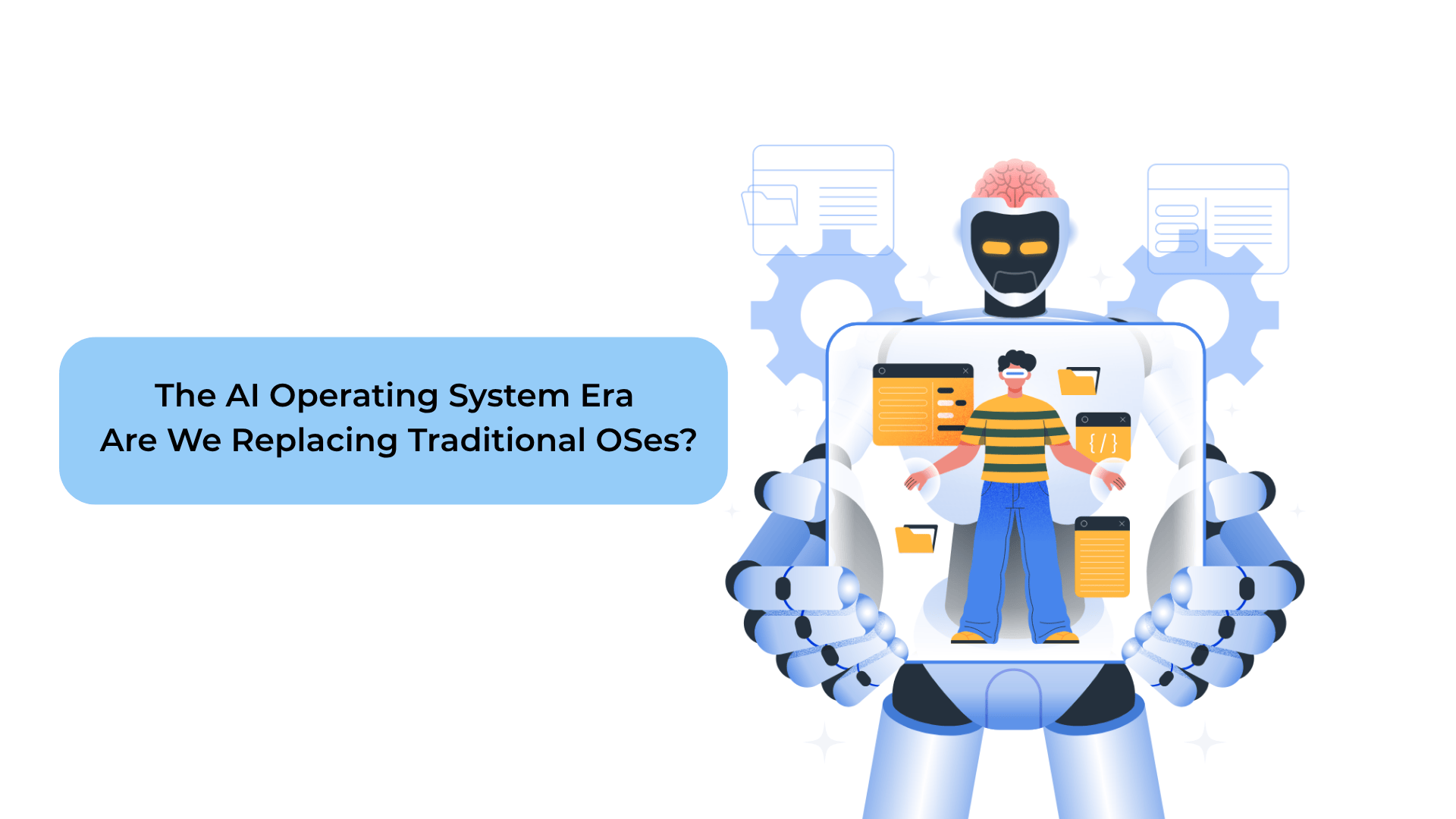As we step deeper into 2025, a fundamental shift in how we interact with devices is underway. Traditional operating systems like Windows, macOS, and Android are no longer the sole gatekeepers of our digital experience. Emerging AI-first OS platforms like Rabbit OS, Cognos OS, and others are challenging the decades-old paradigm, offering a new user interface where natural language and autonomous intelligence take center stage.
So, are we witnessing the beginning of the end for traditional operating systems? Let’s take a closer look.
What Is an AI-First Operating System?
An AI-first OS isn’t just a regular operating system with an assistant added on top. It’s built from the ground up around artificial intelligence, offering voice-driven, context-aware, and task-automating interfaces. These systems prioritize intent over input, enabling users to describe what they want and letting the AI handle how it gets done.
Instead of opening apps and navigating menus, you might say:
“Book me a flight to Mumbai next weekend and add it to my calendar.”
The AI handles app access, data fetching, cross-tool coordination, and task execution — all in the background.
Key Players in the AI OS Movement
🟠 Rabbit OS (by Rabbit Inc.)
One of the most hyped debuts of 2025, Rabbit OS powers the Rabbit R1 — a pocket-sized AI device that acts as your assistant without traditional apps.
- Key Feature: Uses a “Large Action Model” (LAM) to control other apps for you.
- Why It Matters: It doesn’t just answer questions — it does things for you across third-party services.
🔵 Cognos OS
Currently in development, Cognos aims to be the first desktop-level AI OS that integrates real-time cognition, memory, and multitasking AI agents.
- Key Feature: Dynamic context tracking and persistent memory to learn from your behavior.
- Use Case: It may auto-summarize emails, predict tasks, and generate complete project drafts.
🟣 Inflection Pi and Others
While not full OSes, AI interfaces like Inflection Pi, Rewind AI, and Humane’s AI Pin are laying the foundation for screenless, ambient operating systems. These systems aim to replace even the need for phones or PCs by embedding AI into your clothing, glasses, or environment.
How AI OSes Are Changing User Interaction
- No More App Fatigue
- With AI managing tasks across different apps, users don’t need to jump between dozens of tools.
- Voice-First Interfaces
- Speech and natural language are becoming primary input methods, reducing screen dependency.
- Task Abstraction
- Users express outcomes (“edit my resume” or “schedule my week”) rather than step-by-step commands.
- Hyper-Personalization
- AI-first systems adapt to individual habits, preferences, and routines in real time.
- Privacy Rethink
- Most AI OS startups focus on on-device processing and encryption, a trend that challenges cloud-based data collection.
Limitations and Concerns
- Trust and Transparency
- Users need to trust AI to make decisions, which raises ethical concerns around automation bias, data privacy, and algorithmic control.
- Reliance on Ecosystem Compatibility
- AI OSes often need access to external apps, which may not always provide open APIs or permissions.
- Early-Stage UX Challenges
- These platforms are still maturing and can be inconsistent, especially in unfamiliar or high-stakes tasks.
Are We Replacing Traditional OSes?
Not yet, but the shift has begun. In the short term, AI-first OSes will likely coexist with traditional systems, serving as intelligent overlays or secondary devices. But as these platforms mature and integrate seamlessly into daily life, the OS as we know it may evolve into an invisible, adaptive AI layer that works with us, not just for us.
Final Thoughts
The AI Operating System era marks a turning point in tech history from command-based interaction to intent-driven automation. As 2025 progresses, expect more breakthroughs, hybrid interfaces, and deeper debates about how much control we will hand over to artificial intelligence.

